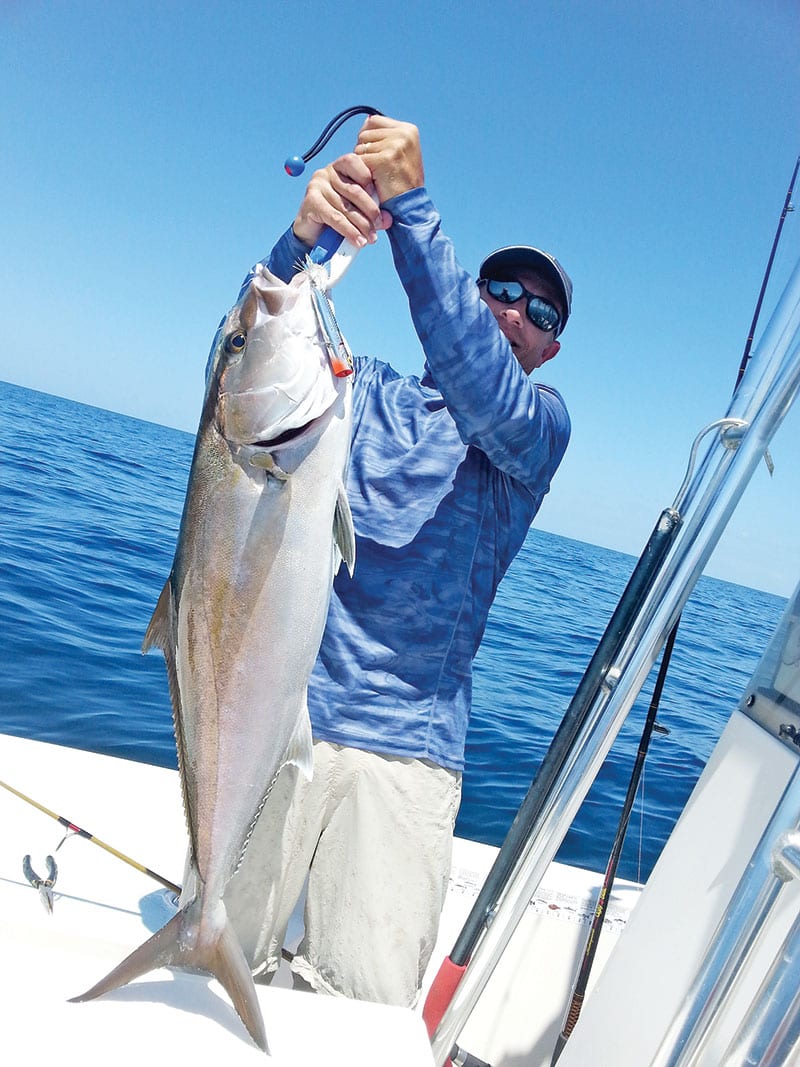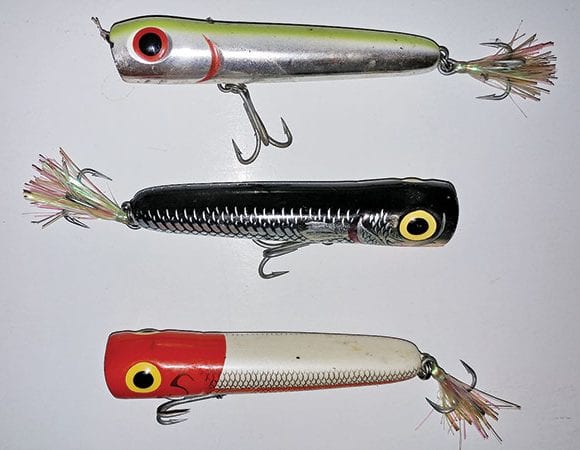
Looking to have a big time with Amberjacks this month? These bruisers are perhaps the hardest fighting fish that swims and just one keeper-sized fish will provide enough meat for a hefty fish-fry.
If you’ve got a big boat and can find them many miles from shore, they’re usually very cooperative and quick to bite. If you’re like me and rely on nearshore spots to catch them, they can prove to be a little picky at times. When a wreck or reef holding AJs has had boat after boat fishing on it, AJs, like many other fish, become well aware of the pressure. I’ve had times when even my best live bait presentations wouldn’t get a sniff!

Lighter lines is often what will make the difference in getting bites or not, but we all know what a big AJ will do to light line. To battle this conundrum, I try to position my boat a good distance away, up-current, from the reef or wreck I’m targeting. AJs hover just above those spots and run right into them when hooked, so if you’re right on top of it, it’s a short distance for them to go. With some distance between you and the reef, you stand a better chance of coaxing one just far enough away that he can’t make it back to the reef once hooked. The height of the structure will determine the distance you need to position your boat.
Once in position, I like to free-line live bait to them using 30 lb. monofilament (no leader) and a strong 5/0 or bigger circle hook. The stretch of the mono, a good strong med-heavy action rod and a smooth drag will allow you to put the full force of your muscle to that fish and hopefully slow him down just enough to stay out of the snags near the bottom.
I’ve found hardtails to be the best live bait choice. AJs react predictably to these fast moving bait-fish. Grunts, pinfish and cigar minnows will work too, but keep in mind the bigger, faster baits are always best.
If they prove to be uninterested, I like to scour the area with a fast moving top-water plug to get them fired up. The Storm Chug Bug draws their attention to the surface and often ignites a feeding response in otherwise uninterested fish. This lure will get the bites too! Rig this lure the same way as mentioned earlier with 30 lb. mono. When you see AJs near the surface chasing the plug but not biting it, reintroduce your live bait and hold on!
Make sure you’re capable of treating fish you don’t plan to harvest, for barotrauma and exhaustion. Often they will require both and you’ve got to be able to deflate their air bladder and pull them along a moving boat to flush water through their gills and revive them. They give it their all and make great memories for so many people so do them right.
~ Capt. Randy (C-note) Cnota
